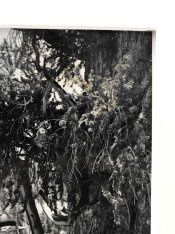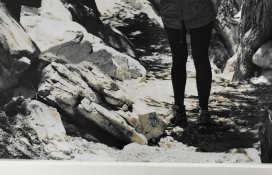Hello all,
Not sure where this goes, though technically it is related to B&W Chemistry/paper.
So I've been doing my own framing: cutting, gluing, etc. Now I'm on to experimenting with wood finishes. However, I have discovered that most likely the VOCs in one or more of my wood finishes has turned part of the silver gelatin print yellow, mainly in the mid-tones, from what I'm assuming is a reaction to the small amounts of residual fixer.
So I ask:
What is the 'Conservation' treatment for Silver gelatin prints in regard to the actual frame? I have cotton mat, etc. But none of that matters if the wood will continue to off-gas for months. The biggest culprit seems to be the latex paint, of which I made a swatch that I mistakenly let dry in my darkroom, turning most of my mis-prints floating around bright yellow. But what about 'boiled' Linseed oil? How long will that take for the chemical driers to be completely gone? BriWax with what I'm assuming is mineral spirits? Should I wait a week or longer? Even after wiping wood down with mineral spirits to get rid of sawdust? Another unpainted frame turned a photo yellow as well--from the latter, I'm assuming. Nearly all wood finishes have VOCs so I am somewhat at a loss.
I know a lot (all) contemporary artists use painted white frames. Are they using a special non-VOC paint? Are they letting it dry for a specified amount of time?
Thanks for any input.
Not sure where this goes, though technically it is related to B&W Chemistry/paper.
So I've been doing my own framing: cutting, gluing, etc. Now I'm on to experimenting with wood finishes. However, I have discovered that most likely the VOCs in one or more of my wood finishes has turned part of the silver gelatin print yellow, mainly in the mid-tones, from what I'm assuming is a reaction to the small amounts of residual fixer.
So I ask:
What is the 'Conservation' treatment for Silver gelatin prints in regard to the actual frame? I have cotton mat, etc. But none of that matters if the wood will continue to off-gas for months. The biggest culprit seems to be the latex paint, of which I made a swatch that I mistakenly let dry in my darkroom, turning most of my mis-prints floating around bright yellow. But what about 'boiled' Linseed oil? How long will that take for the chemical driers to be completely gone? BriWax with what I'm assuming is mineral spirits? Should I wait a week or longer? Even after wiping wood down with mineral spirits to get rid of sawdust? Another unpainted frame turned a photo yellow as well--from the latter, I'm assuming. Nearly all wood finishes have VOCs so I am somewhat at a loss.
I know a lot (all) contemporary artists use painted white frames. Are they using a special non-VOC paint? Are they letting it dry for a specified amount of time?
Thanks for any input.




